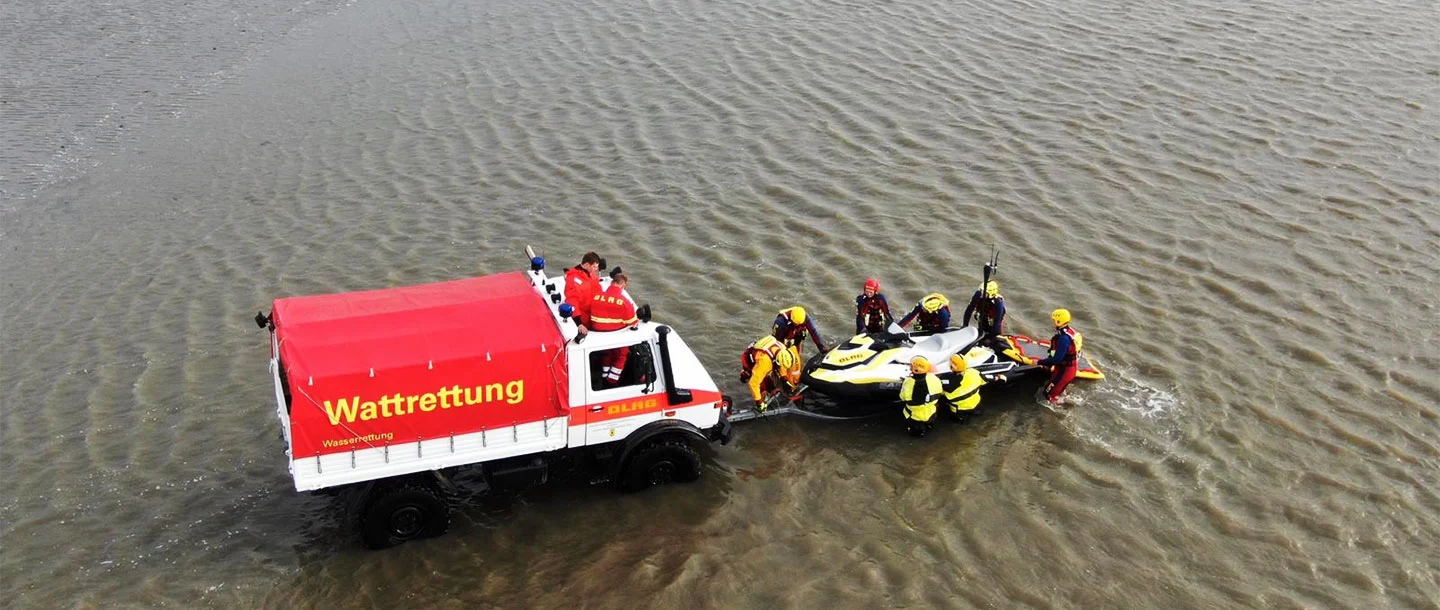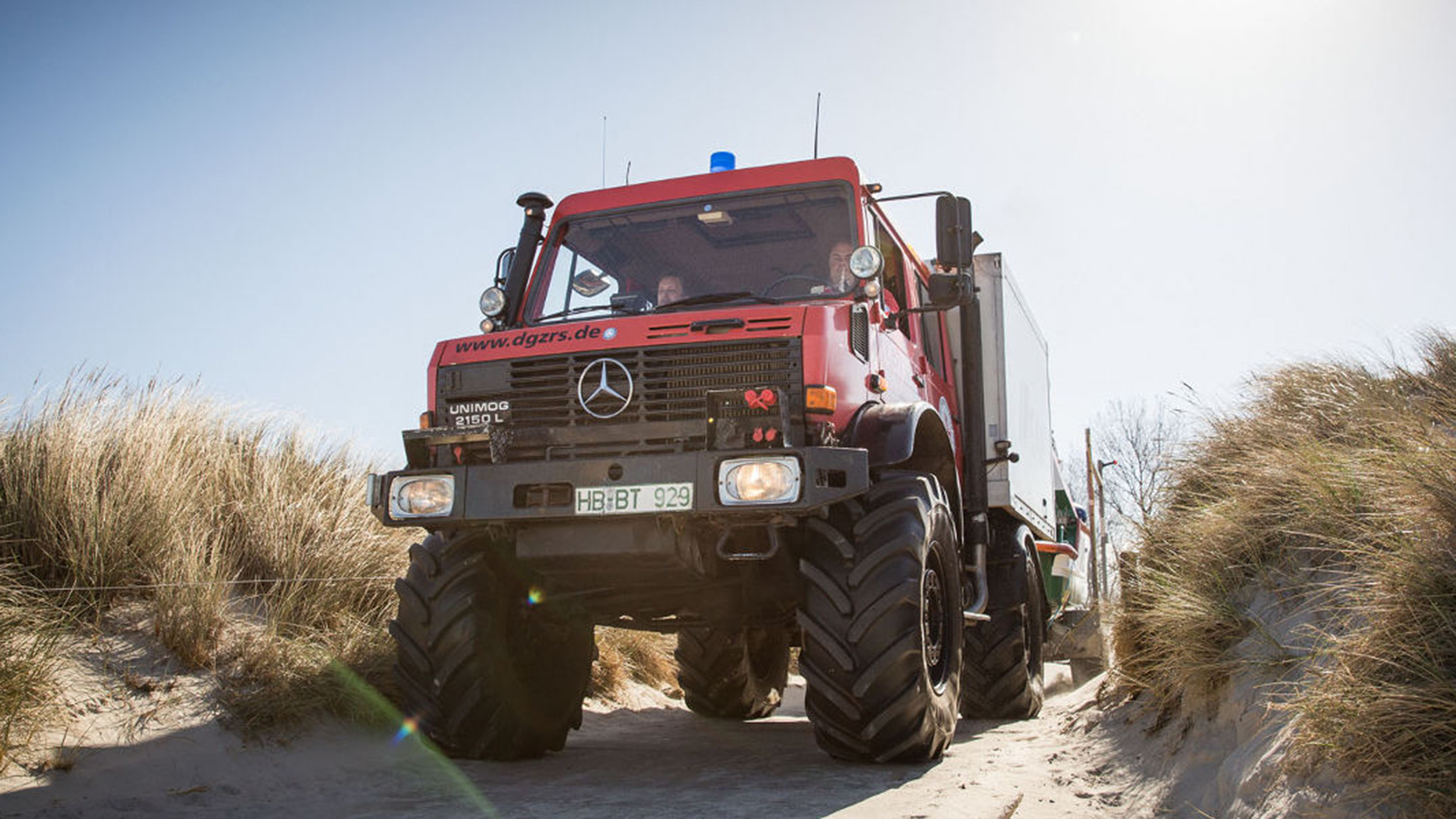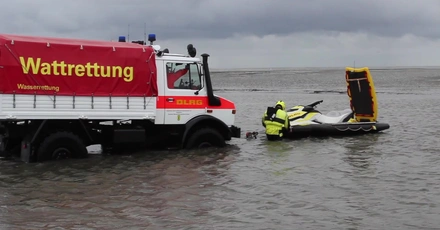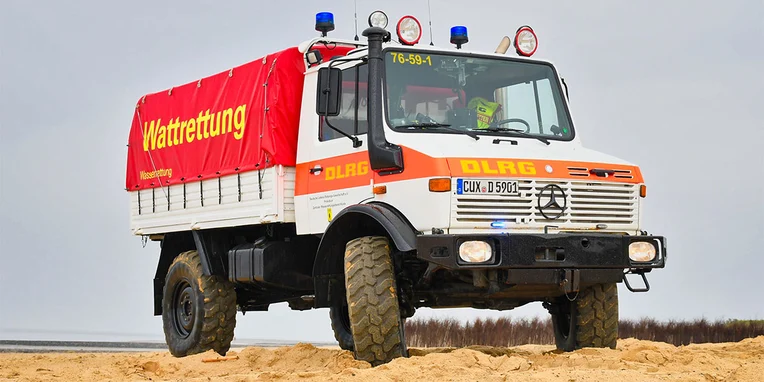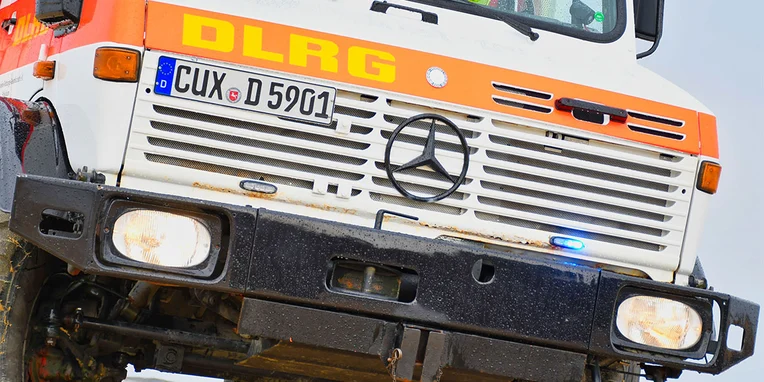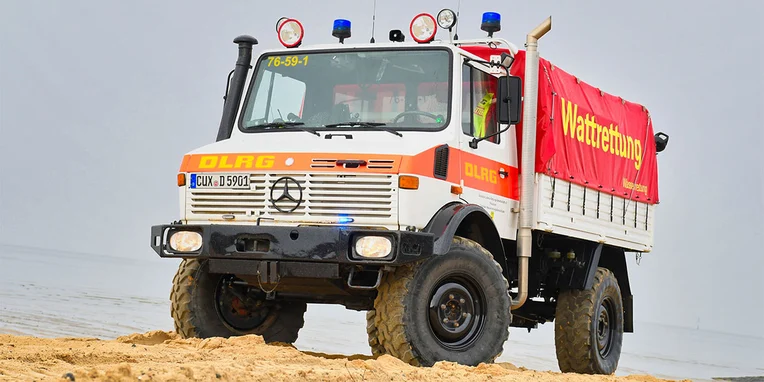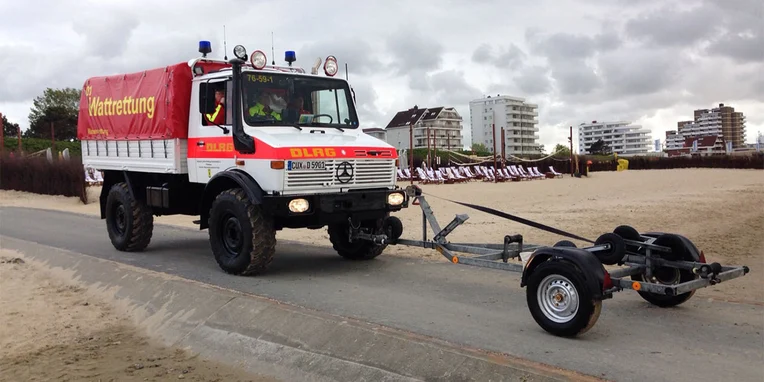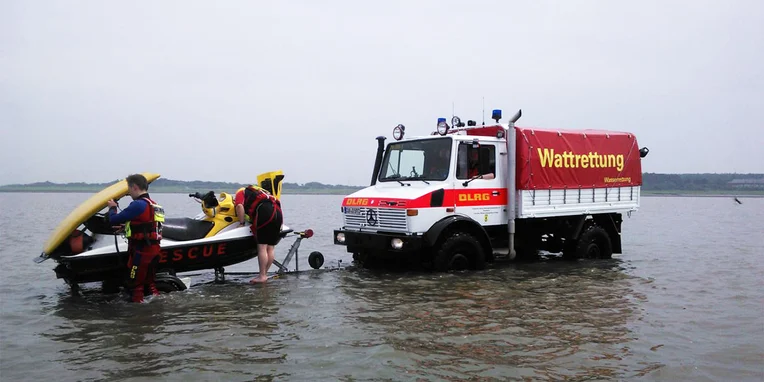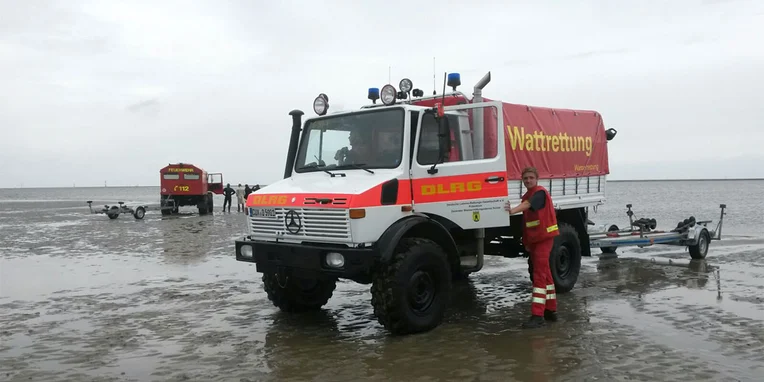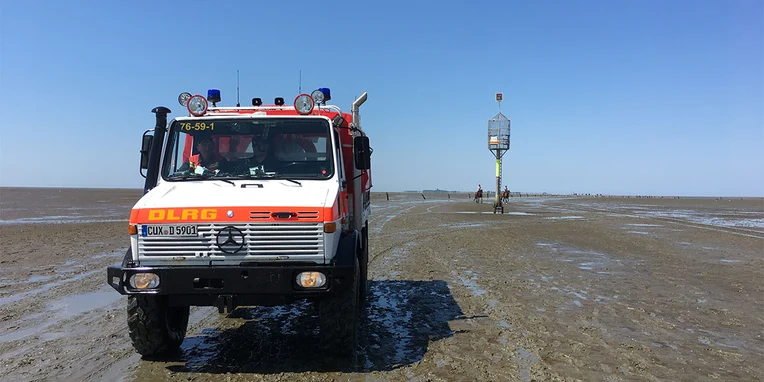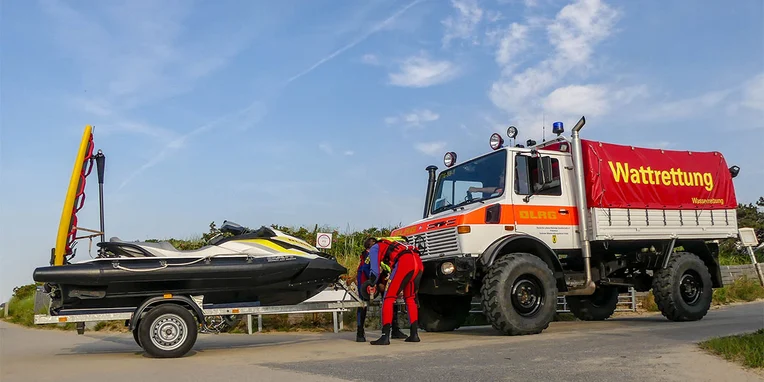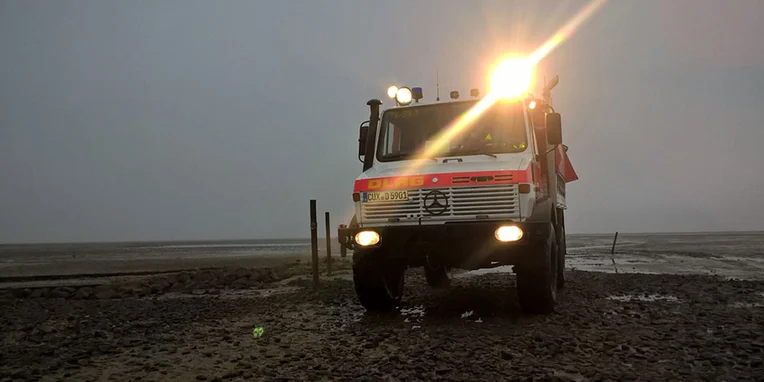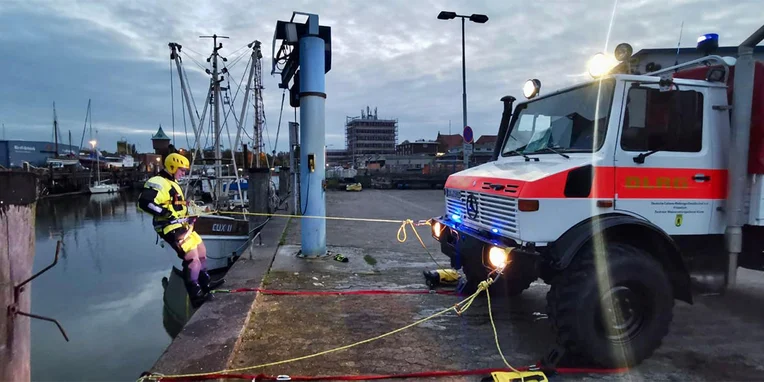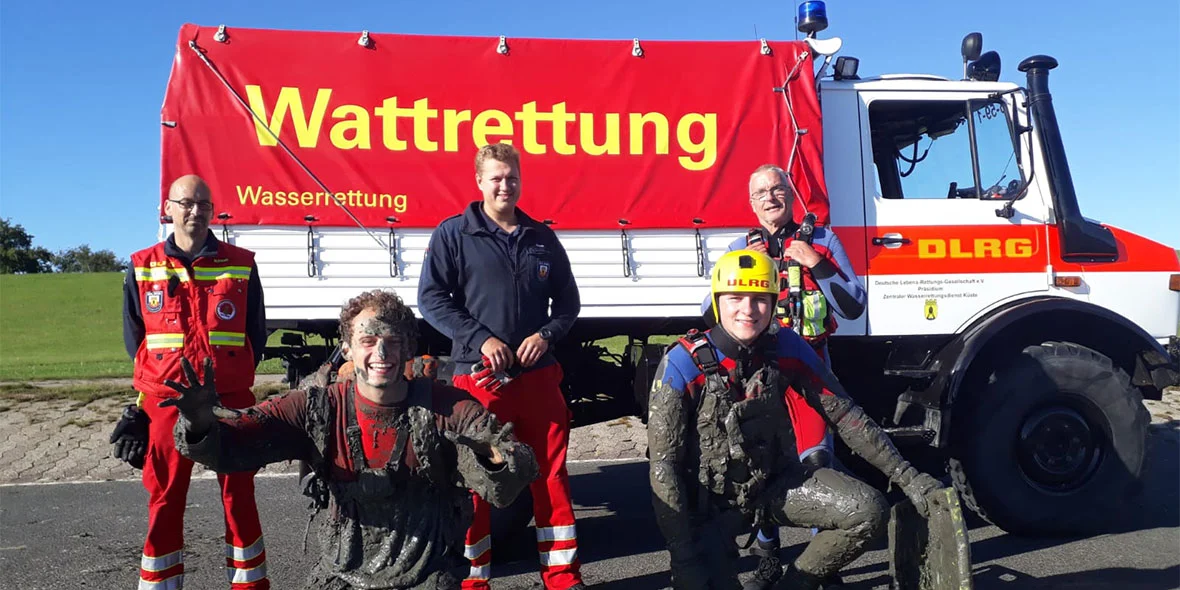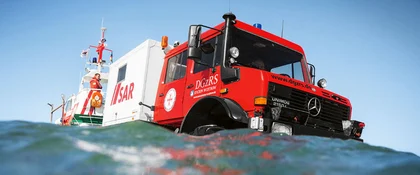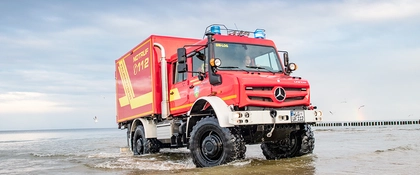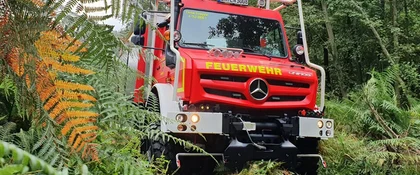Tidal flat rescue meets force of nature.
In addition to a Unimog, which serves purely as a platform and training vehicle, the Tidal Flats Rescue multi-purpose vehicle forms the heart of the fleet. This is a 1984 Unimog 1300 L, used exclusively for rescue operations in the tidal flats area on the western coast of Cuxhaven.
The vehicle is designed to enable the DLRG to launch rescue boats and a jet ski. An additional eight seats are available on the flatbed of the Unimog to accommodate several people at once in the event of accidents on the tidal flats. A further person can be transported lying on a scoop stretcher in the vehicle interior. For example, a complete Wadden wagon crew, surprised by the sudden rise of the tide, can be brought safely ashore.
“The special feature of our Unimog for tidal flat rescue is that it was completely stripped down,” reports Andrew Weigelt. "We raised the position of everything on its underside – for example, batteries – while the stowage boxes and spare wheel were removed."
The whole frame was also painted with a special salt-water resistant boat's varnish. “Despite this, we have to wash the Unimog very thoroughly after each operation, and we do this with hot water in order to get the sand and salt water out everywhere,” adds Andrew Weigelt.
The Unimog vehicles are perfectly equipped to be able to go out onto the tidal flats day and night.
Andrew Weigelt, equipment manager at DLRG Cuxhaven e.V.
Resisting extreme conditions. Against the clock.
The decisive advantage of the Unimog over other vehicles of its kind, apart from its robust construction, is its excellent off-road capability with all-wheel drive and differential shifting. In addition, its impressive fording capability enables the Unimog to pass deep tideways as well as cross the tidal flats when the rising water is already 1.20 m deep.
However, the greatest adversary for rescue missions on the tidal flats is time itself. "Normally, the water rises at a rate of around 3 cm per minute here, and under unfavourable wind conditions it can even reach a rate of 11 cm per minute," according to press spokesman and Head of Public Relations Christoph Plaisier, who has been active with the Cuxhaven DLRG for just under nine years and has been at the "very forefront", too.
Far superior to a tractor.
"Of course we could also use tractors," says Andrew Weigelt. "But there's always the problem of wave impact. With the Unimog, it's all much more compact."
Another advantage the equipment manager mentions is the cab of the Unimog. Except for minor details, the cockpits are all virtually identical. "If our drivers have been trained with one vehicle, they can then move half our fleet and don't need a completely new briefing for each vehicle."
The Unimog – without alternative.
In the future too, Cuxhaven's rescuers will continue to rely on the Unimog. "There is actually no alternative," Andrew Weigelt believes. "If a Unimog were now able to float, it would be the absolute all-rounder; a "one-man band" so to speak," the equipment manager says with a laugh. The only thing that could theoretically better it would be an amphibian vehicle. The local health resort administration does indeed operate such a vehicle. But it can only be repaired with great effort because special parts are needed for that. "There is nothing directly off the shelf – as with the Unimog – where you simply go to the Unimog service partner and say you would like this or that spare part," Andrew Weigelt sums things up.
A land vehicle with a ship's DNA.
Although the Unimog of the DLRG Cuxhaven cannot swim, it is equipped with an independent tracking system which is merged with the AIS (Automatic Identification System) signals of the shipping in the control centres. This makes it possible to observe from land where the vehicle is located and whether potential dangers are imminent. In the end, this almost makes the Unimog into that "one-man band" – the all-round talent – that Andrew Weigelt would like it to be.
